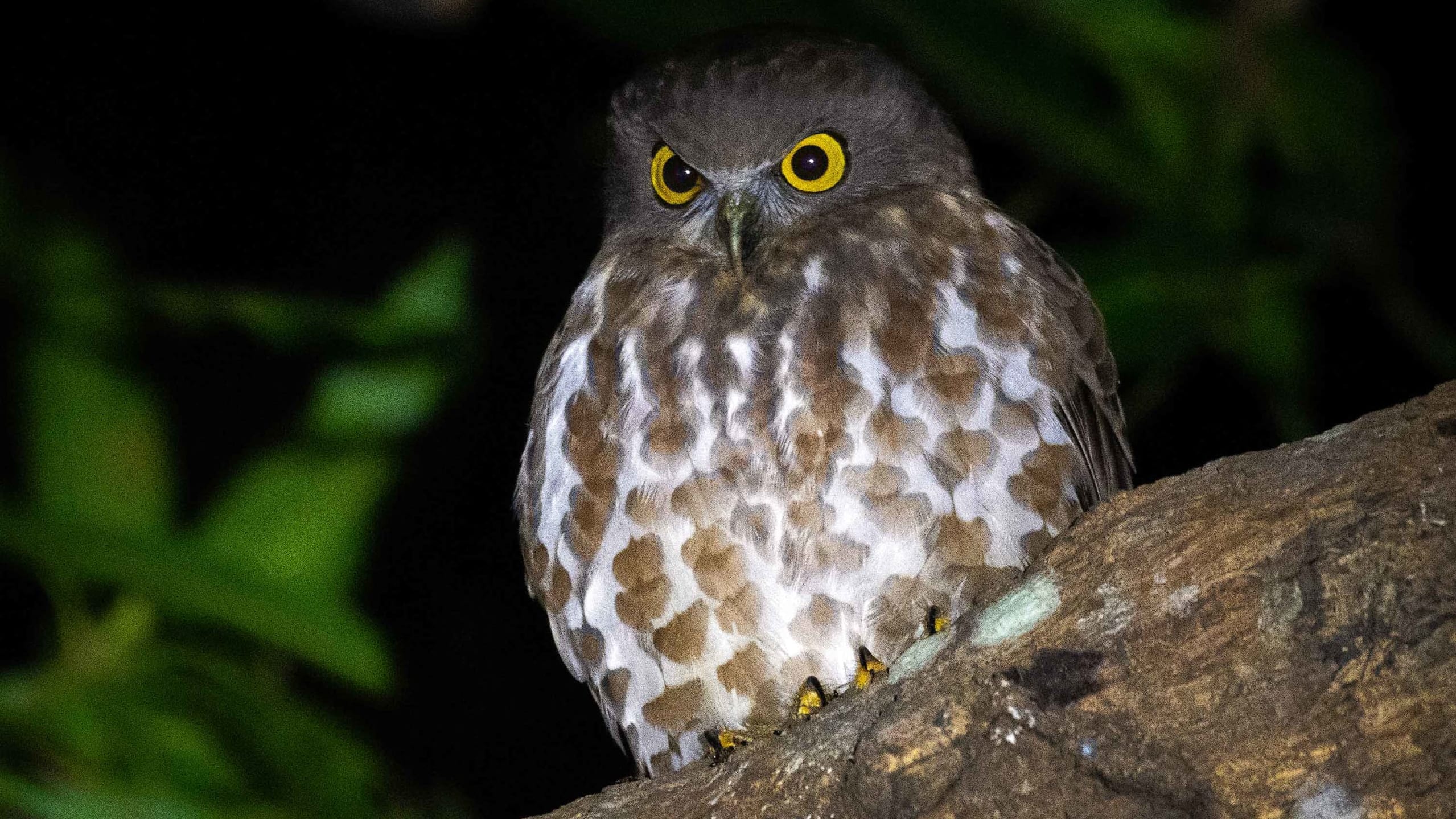 Listen to this article
•
15:34 min
Listen to this article
•
15:34 min
Owls have been one of my favourites ever since I began birding. There is a special joy and dopamine rush I get on venturing out to see them in the dark with a torch. Amidst the soft rustle of leaves on a windy night and the constant chirping of grasshoppers and katydids, I keep my ears peeled for owl calls. Sometimes, the night sky is filled with stars, sometimes it is only the moon peeking from behind a gust of clouds, but a soft “hoooo” or a sharp set of screeching calls will alert my senses to the presence of owls. And so it was, in the beautiful mangrove system of Bhitarkanika National Park in Odisha, that I had a wonderful nocturnal experience worth sharing.
My batchmates from the Wildlife Institute of India, Dehradun and I were on a class tour to Odisha in February 2018. Our first stop was Bhitarkanika, a beautiful mangrove ecosystem situated in the Kendrapara district. The sanctuary is famous not just for its saltwater crocodile population but also as a fine birding location. It is especially famous for its multitude of sympatric kingfishers (eight species coexist here) and for being one of only two places on the subcontinent to see the elusive mangrove pitta (Pitta megarhyncha). Getting down at Dangmal Jetty after a ferry ride from Gupti, we walked towards our homestay, a quaint place in the middle of a small village. The road leading up to the homestay was lined with coconut trees on both sides and decorated with pretty rangolis crafted by the villagers.

We had planned a birdwatching session around the creeks that evening to try and find the famed kingfishers and pittas. It was getting dark by the time we reached the jetty. Just as we landed, I heard a descending whooping call “whooooooooo......whoooooo” from not too far away. It was a collared scops owl (Otus lettia), a bird I was well acquainted with at least by its call. My fellow batchmates Abir, Kushagra, and I tried to find it. Though the owl was very close, we could not figure out exactly where it was perched in the waning light. We took a small trail that cut through muddy mangrove patches and started scanning both sides of the path.
Apart from my two batchmates, there were mosquitos aplenty to keep us company. Amidst the failed attempts at swatting them while still keeping our ears focused, we finally saw the noisemaker. It was perched a couple of metres from us, on a tree branch at eye level. It was a small, stocky bird with light striations on its belly, visible thanks to my new Nikon binoculars, which proved their worth. At first, we froze in place, lest even a step scare it. However, the scops owl seemed unbothered and even took off a couple of times only to return to the same perch. Having had our fill of this one, we left it and proceeded. No sooner did we start walking than we saw a blue flash in the mud — a mangrove pitta was still foraging even though it was dark. This was a fleeting sighting, followed by a large-tailed nightjar (Caprimulgus macrurus) perched on an open branch, oblivious to our presence (or so we thought). The night was turning out to be very exciting!

Heading back towards our homestay, we heard the place erupt with owl calls. At first, there was a collared scops owl, followed soon by another gem, the oriental scops owl (Otus sunia). Anyone unaware of the call of the oriental scops owl would assume it is either a frog or even a (night) barbet. Its characteristic “woook....wutroook. woook....wutroook” is hard to miss, and seemed to be coming from everywhere. Indeed, as we brought out our headlamps and torch, we found the piercing yellow irises of an oriental scops owl looking back at us from atop coconut trees. Later, I also found out that these owls are among several other owls that duet — meaning, they will often synchronise their calls with a potential mate. It would often seem like one individual was finishing the other one’s call. This tapestry of owl songs was soon joined by the calls of a few brown hawk owls or (now called, brown boobook; Ninox scutulatab). These are comparatively larger owls with a thin body, dark brown head, and lighter brown, bold streaks on their breasts. They also duet, but we did not see them.
Over the next few days, we were enthralled by the vocal diversity of the owls in Bhitarkanika. While eating, or walking back to our camps, or even tucking in for the night, it was calming to hear them as the backdrop to the soulful silence that only the countryside could offer. We were content.






